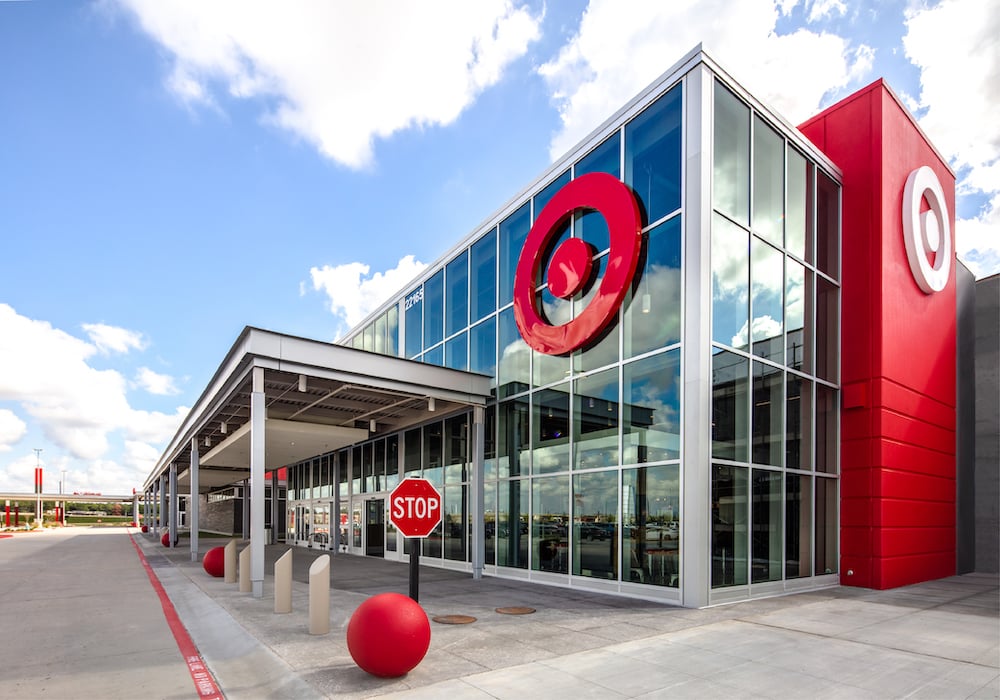Target (NYSE: TGT) was one of the best-performing retail stocks during the pandemic.
Its combination of selling essentials such as food and groceries as well as discretionary goods like electronics, apparel, and beauty products paid off as it was able to keep its doors open and saw surging growth from its Drive Up curbside pickup program.
However, since then, Target’s business has flopped. Sales of discretionary goods have fallen as consumers have faced pressure from inflation and higher interest rates, and the company has also been plagued by a spike in theft, like many of its retail peers.
Investors waiting for a turnaround, however, seem to have finally got what they were looking for in the company’s second-quarter earnings report, and Target stock spiked double digits on the news.
Comparable sales rose 2% in the quarter, a modest pace, but that was driven by 3% traffic growth, showing customers are coming back to the retailer. Additionally, the company saw traffic growth in all six core merchandising categories. Sales in discretionary categories, which make up the majority of Target’s revenue are improving, and the company reported 3% growth in apparel, a key category.
Revenue in the quarter rose 2.7% to $25.5 billion, ahead of estimates of $25.2 billion. However, the most impressive part of the report was Target’s bottom-line improvements. Gross margin increased from 27% to 28.9% due to cost improvements and favorable category mix, which led its operating margin up 160 basis points to 6.4%. As a result, earnings per share jumped 42% in the quarter to $2.57, well ahead of the consensus at $2.18. Gross margin could continue to move higher, lifting operating margin in the second half of the year.
Looking ahead, Target also raised its earnings per share guidance from $8.60-$9.60 to $9.00-$9.70, or from $9.10 to $9.35 at the midpoint, which compares to the consensus at $9.28.
What’s fueling Target’s comeback
Target is still digging itself out of a deep hole, but the company is seeing promising signs in its business as digital comparable sales rose 8.7% in the quarter, driven by low double-digit growth in same-day fulfillment services such as Drive Up and Target Circle 360.
Target also continues to improve its store base with 10 new stores, 60 store remodels in process, and three new distribution facilities.
It’s seen strong growth from its Roundel advertising business, following in the footsteps of peers like Amazon and Walmart, and it is targeting high-teens growth this year on top of 20% growth in 2023. Roundel is also helping expand Target’s margins.
Target is also better controlling theft, as it said lower “inventory shrink,” which mostly refers to theft, lifted gross margin by 90 basis points.
Is Target a buy?
After the pop in the stock, Target trades at a price-to-earnings ratio of 17, which looks like a good price if you believe its momentum will continue.
By comparison, Walmart trades at a forward P/E ratio of 34, though the retailer has earned a premium after executing well over several quarters.
However, Target has similar potential to Walmart as it also enjoys a number of competitive advantages, including a multicategory retail model that only a few other retailers, like Walmart, Amazon, and Costco can claim. Its model is also highly adaptable with a presence in urban, suburban, and rural environments, and its same-day fulfillment services help differentiate the business as well.
It might be too soon to call Target’s improvement a comeback, especially as it’s only targeting near-flat comparable sales growth for the year. However, it’s clear there’s a lot of leverage in its business model if it can grow its gross margin, and the company should get some relief from interest rate cuts, which should encourage consumer spending over the coming quarters.
Considering its valuation, there’s still a lot of upside potential to Target stock if it can continue improving.
Should you invest $1,000 in Target right now?
Before you buy stock in Target, consider this:
The Motley Fool Stock Advisor analyst team just identified what they believe are the 10 best stocks for investors to buy now… and Target wasn’t one of them. The 10 stocks that made the cut could produce monster returns in the coming years.
Consider when Nvidia made this list on April 15, 2005… if you invested $1,000 at the time of our recommendation, you’d have $792,725!*
Stock Advisor provides investors with an easy-to-follow blueprint for success, including guidance on building a portfolio, regular updates from analysts, and two new stock picks each month. The Stock Advisor service has more than quadrupled the return of S&P 500 since 2002*.
See the 10 stocks »
*Stock Advisor returns as of August 22, 2024
John Mackey, former CEO of Whole Foods Market, an Amazon subsidiary, is a member of The Motley Fool’s board of directors. Jeremy Bowman has positions in Amazon and Target. The Motley Fool has positions in and recommends Amazon, Costco Wholesale, Target, and Walmart. The Motley Fool has a disclosure policy.
Target Is Finally Turning the Corner. Time To Buy the Stock? was originally published by The Motley Fool
Read the full article here

